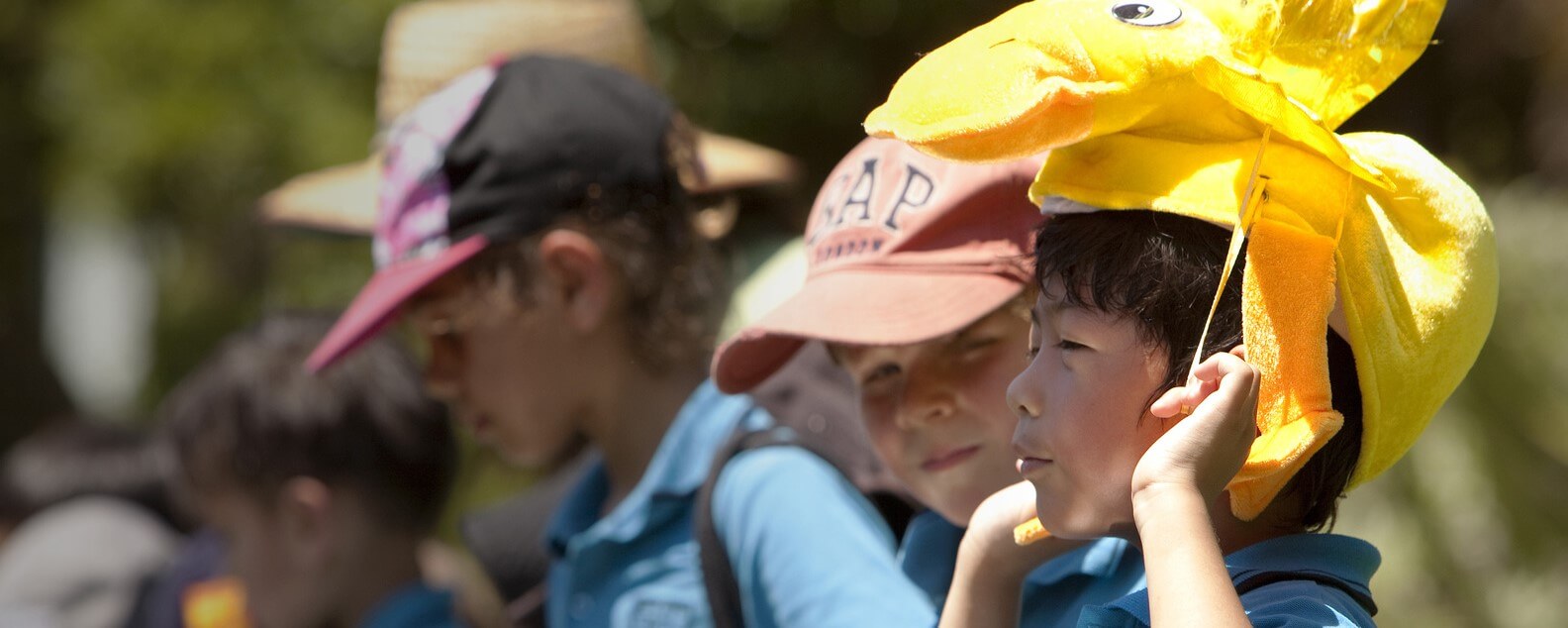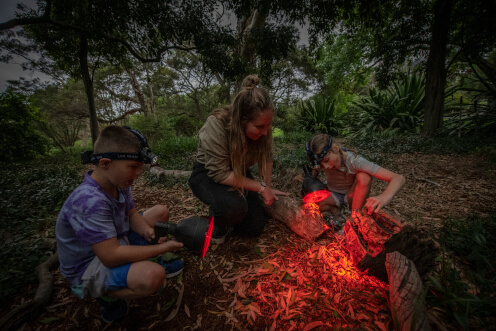Alexander's Outing
Based on Pamela Allen’s book ‘Alexander’s Outing’, children trace Alexander’s journey through the garden and solve mathematical problems along the way.

Early Stage 1
Mathematics and English
2 hours
Minimum charges apply. Discounts apply for full day programs!
Based on Pamela Allen’s book ‘Alexander’s Outing’, children trace Alexander’s journey through the garden and solve mathematical problems along the way.
Students will
- Actively participate in a retelling of the story Alexander’s Outing.
- Adventure through the Garden to count bird numbers, identify shapes in the environment and compare the height and width of trees eg bottle trees.
- Use mathematical language while re-enacting the rescuing of Alexander by using water to make him float.
Key content
- Estimate, counting and comparing the number of objects in a group, e.g. birds near the pond.
- Use everyday and comparative language to describe length e.g. long, longer walk through the Garden, tall, taller trees.
- Fill and empty containers with water e.g. to rescue Alexander, and use the terms “full”, “empty” and “about half full”.
- Describe and name familiar two-dimensional shapes in the environment e.g. triangles in the harbour bridge.
- Respond to the shared reading of texts for enjoyment and pleasure and retell familiar stories e.g. Alexander’s Outing.
Links to New South Wales curriculum
Focus Syllabus Outcomes
Mathematics
- Describes mathematical situations using everyday language, actions, materials and informal recordings (MAe-1WM)
English
- Communicates with peers and known adults in informal and guided activities demonstrating emerging skills of group interaction (ENe-1A)
Supported Syllabus Outcomes
Mathematics
- Uses objects, actions, technology and/or trial and error to explore mathematical problems (MAe-2WM)
- Describes and compares lengths and distances using everyday language (MAe-9MG)
- Describes and compares the capacities of containers and the volumes of objects or substances using everyday language (MAe-11MG)
- Manipulates, sorts and describes representations of two-dimensional shapes, including circles, triangles, squares and rectangles, using everyday language (MAe-15MG)
English
- Demonstrates developing skills and strategies to read, view and comprehend short, predictable texts on familiar topics in different media and technologies (ENe-4A)

"Actively participate in a retelling of the story Alexander’s Outing."
Related excursions

Experience the Garden and its fascinating nightlife on this adventure by torchlight.

Based on Katrina Germein’s book Big Rain Coming, students will explore how First Nations people read and understand daily and seasonal weather changes and how this affects the places and environments around us.

Sydney Science Trail excursions are back this August. Explore the program and book your primary school class excursion for National Science Week.